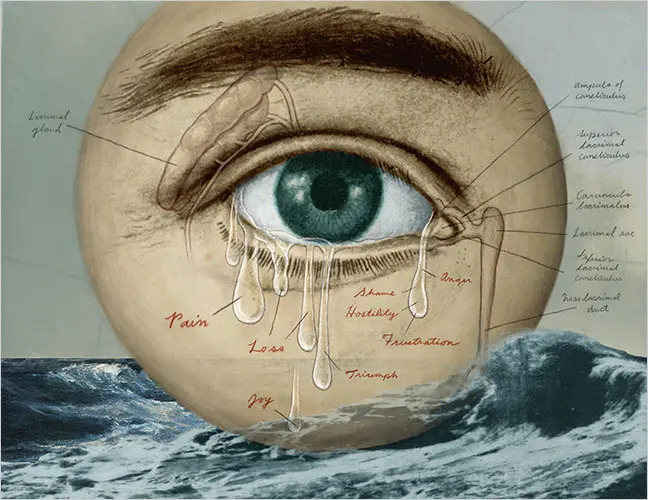Catharsis
 Graphics courtesy of The New York TimesOpens in new window
Graphics courtesy of The New York TimesOpens in new window
Catharsis refers to an emotional release or purging. Catharsis is experienced in dramaturgical, religious, and psychotherapy contexts and may result in cleansing, balancing, or healing. |
The term catharsis was first used by Aristotle and described the emotions that are felt at the conclusion of watching a tragedy. Individuals become so involved in watching a drama that very strong sentiments of sorrow, ecstasy, pity, or other emotions may be felt.
According to Aristotle, the catharsis leads to a highly positive result: a restoration of one’s emotional attitude. As an individual becomes involved in daily life, he or she may move toward an inappropriate emotionality or stoicism (an impassiveness, indifference to pleasure or pain), becoming emotionally unbalanced, in a sense. Watching drama and experiencing feelings vicariously through the characters leads to an equalizing of the emotions; one relearns how to feel emotions at appropriate levels.
Catharsis is also spiritual or religious. In this context, the emotion that requires release is guilt. Either expression of the guiltOpens in new window (e.g., through confession or atonement) or punishment for the guilt may lead to a catharsis.
For example, in the 2007 film AtonementOpens in new window, a young girl’s lie leads to the arrest and imprisonment of an innocent man (her sister’s lover) for the rape of a minor. The man, who had had a bright future prior to the imprisonment, died a few years after his conviction, as did the girl’s sister. (Both died in World War II.) In her old age, the girl/woman who told the lie writes a novel in which the man and her sister do not die young but live. The man is released from prison and reunites with his lover (the girl’s sister).
As the author states in her novel, she gives the man and her sister a life in fiction that they did not have in reality, a life that they both deserved. Through writing the novel, the girl/woman receives some relief from her guilt—a catharsis.
Catharsis is an emotional release in therapy and may lead to the relief of psychological symptoms. Therapists in the late 19th century, including Josef Breuer, Jean Charcot, and Sigmund Freud, utilized catharsis with their patients.
Many therapists today continue to encourage catharsis in patients. In therapy, a patient may experience an emotional release by discussing his painful past, with resulting relief of psychological symptoms.
According to early psychotherapists such as Freud, the cure of psychological symptoms requires that one experience an emotional release; that is, the patint must revisit the past, remembering when the symptom originated. It is essential that the patient feel the strong feelings that were felt when the symptom began. Then, the patient, who is now in a safe, trusting relationship with the therapist, can both experience and express the emotion that he had been suppressing.
For instance, Freud’ patient the “Rat Man” suffered from many symptoms of obsessive-compulsive disorderOpens in new window, including an obsessive image that his father was devoured by rats.
Early in the therepy, Freud suspected that the Rat Man felt an intense anger and hatred toward his father, but he openly expressed only a strong love. For example, he recalled that his father used to beat him mercilessly.
During the therapeutic session, when the Rat Man recalled this memory, he actually relieved the event. He stood up, recoiled, and screamed as if he were being beaten and experienced the intense anger and hatred he had for his father in that moment. This led to a catharsis—the Rat Man began to admit the hatred he had for his father, and his obsessive-compulsive symptoms began to diminish.
Some evidence exists that open expression of psychological problems improves psychological or physical health (e.g., Hughes, Uhlmann, & Pennebaker, 1994), thus validating the intuitions of Aristotle, Freud, and others about the benefits of catharsis.
See also:
- Duggan, M., & Grainger, R. (1997). Imagination, identification, and catharsis in theatre and therapy, London: Jessica Kingsley.
- Hughes, C. F., Uhlmann, C., & Pennebaker, J. W. (1994). The body’s response to emotional trauma: Linking verbal text with autonomous activity. Journal of Personality, 62, 565 – 586.

